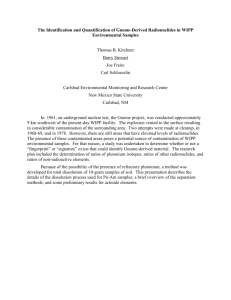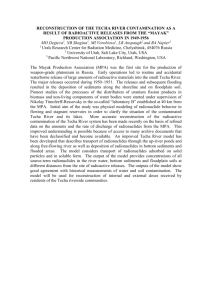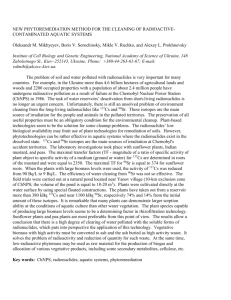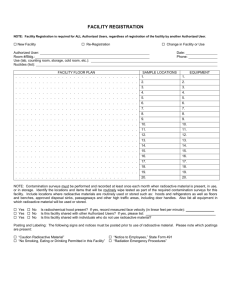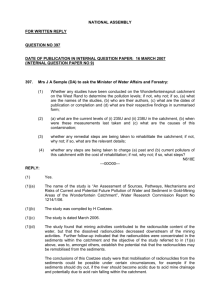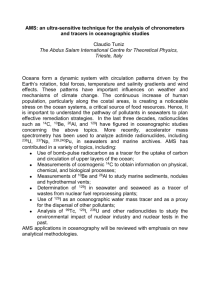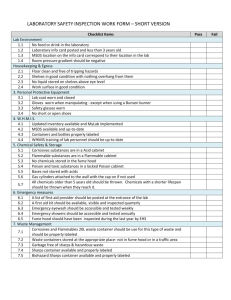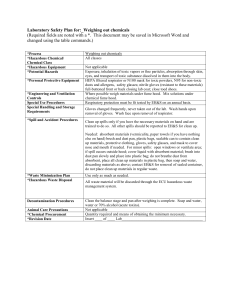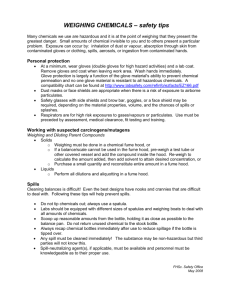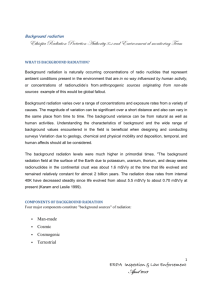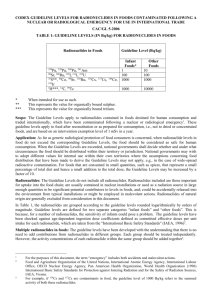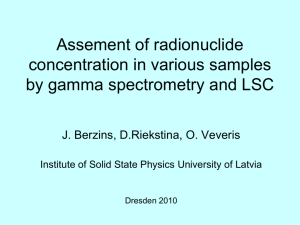Safe Handling Procedures for all Radionuclides
advertisement
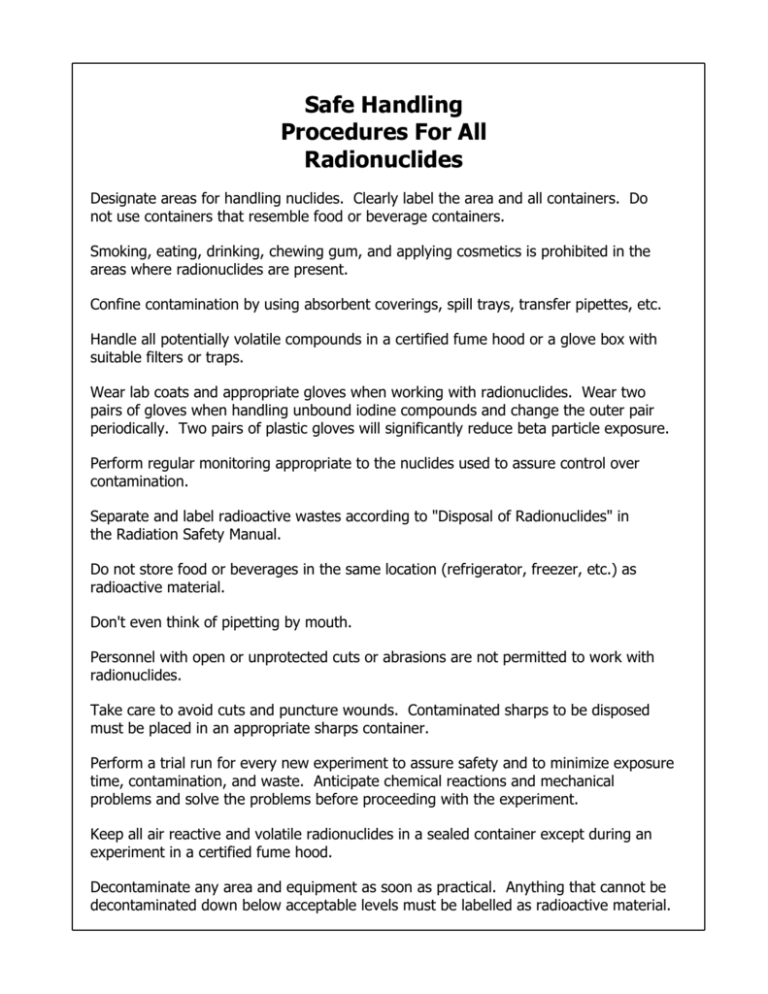
Safe Handling Procedures For All Radionuclides Designate areas for handling nuclides. Clearly label the area and all containers. Do not use containers that resemble food or beverage containers. Smoking, eating, drinking, chewing gum, and applying cosmetics is prohibited in the areas where radionuclides are present. Confine contamination by using absorbent coverings, spill trays, transfer pipettes, etc. Handle all potentially volatile compounds in a certified fume hood or a glove box with suitable filters or traps. Wear lab coats and appropriate gloves when working with radionuclides. Wear two pairs of gloves when handling unbound iodine compounds and change the outer pair periodically. Two pairs of plastic gloves will significantly reduce beta particle exposure. Perform regular monitoring appropriate to the nuclides used to assure control over contamination. Separate and label radioactive wastes according to "Disposal of Radionuclides" in the Radiation Safety Manual. Do not store food or beverages in the same location (refrigerator, freezer, etc.) as radioactive material. Don't even think of pipetting by mouth. Personnel with open or unprotected cuts or abrasions are not permitted to work with radionuclides. Take care to avoid cuts and puncture wounds. Contaminated sharps to be disposed must be placed in an appropriate sharps container. Perform a trial run for every new experiment to assure safety and to minimize exposure time, contamination, and waste. Anticipate chemical reactions and mechanical problems and solve the problems before proceeding with the experiment. Keep all air reactive and volatile radionuclides in a sealed container except during an experiment in a certified fume hood. Decontaminate any area and equipment as soon as practical. Anything that cannot be decontaminated down below acceptable levels must be labelled as radioactive material.
